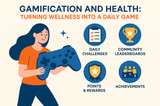Top Methods of Preventing Medical Errors in Healthcare Settings
Preventing medical errors in healthcare settings is essential to ensure the safety and well-being of patients. Medical errors are the third leading cause of death in the United States and can have serious consequences for patients and their families. There are several key principles that can be implemented to prevent medical errors in hospitals.
- Communication: Effective communication is key to preventing medical errors. This includes clear and concise communication among healthcare providers, patients, and families. It is important to ensure that all members of the healthcare team are aware of the patient's care plan and that any changes or concerns are communicated promptly.
- Standardization: Standardization of processes and procedures can help prevent medical errors. This includes using evidence-based practices, creating clear protocols for medication administration, and using checklists to ensure that all steps are completed correctly.
- Teamwork: Teamwork is essential to preventing medical errors. This includes fostering a culture of safety, promoting open communication, and encouraging staff to speak up when they see something that could lead to an error.
- Technology: Technology can play a role in preventing medical errors. This includes using electronic health records, barcode scanning, and computerized provider order entry systems to ensure that the right patient receives the right treatment at the right time.
- Education and training: Ongoing education and training for healthcare providers can help prevent medical errors. This includes providing training on the latest best practices, as well as providing education on how to identify and report potential errors.
- Quality improvement: Quality improvement programs can help identify and reduce the risk of medical errors. This includes monitoring data, analyzing trends, and implementing changes based on the findings to improve the safety of patients.
- Patient involvement: Patient involvement is key to preventing medical errors. This includes educating patients about their care, encouraging them to ask questions, and involving them in decisions about their treatment.
Preventing medical errors in healthcare settings requires a multifaceted approach that includes effective communication, standardization, teamwork, technology, education and training, quality improvement, and patient involvement. By implementing these principles, hospitals can create a culture of safety and reduce the risk of medical errors, ensuring the safety and well-being of patients.
Truway Health News & Insights
Breathe, Refuel, Recharge: Finding Your Daily Balance
Written by Perry JohanssenPublished and Edited by Truway Health Life rarely slows down on its own. B...
Truway Health Launches “ImmuneNet”: A New Era in Quantum-Synaptic Immunotherapy
Reimagining How Immunity Can Be Understood and Guided At Truway Health, innovation never sleeps.Toda...
Announcing the HEALTH Trial: Humanoid Evaluation and Learning in Healthcare
Published by Truway Health, Inc.Principal Investigator: Gavin SolomonClinicalTrials.gov Identifier:...
We’re thrilled to launch our first-ever clinical trial of TruDxPc
Study Identification Protocol ID: TRHW-DX-001 Brief Title: Truway Diagnostic Tools in Primary Ca...
What to Know About the Seasonal Flu This Year
As cooler weather sets in, flu season returns. Each year brings new strains, evolving guidance, and...
Gamification and Health: Turning Wellness Into a Daily Game
Introduction For many people, staying healthy feels like a chore: eating clean, exercising regularly...







